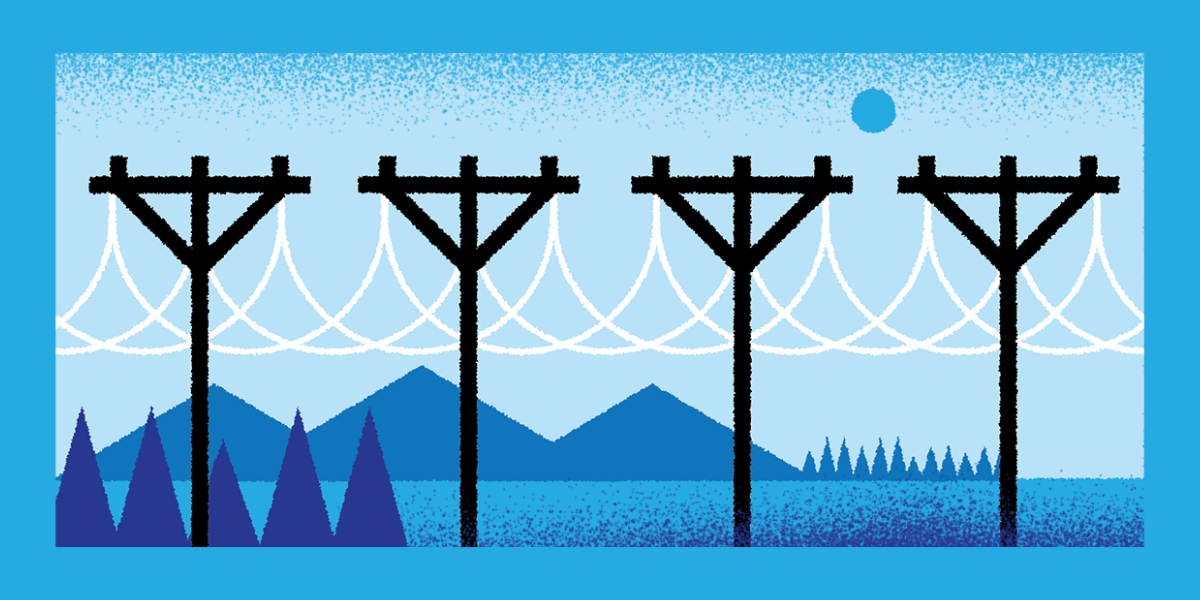Getting Your Co-op Ready for Broadband
by IPv4.Global Staff

The US Federal and state governments are starting programs to distribute $65 billion for rural broadband services. NRECA has encouraged activities like utility pole audits to get ready. But deploying internet services requires an intangible resource, too: IPv4 addresses.
Every internet connected network needs a pool of IPv4 addresses to assign to technical infrastructure and assign to customers.
Co-ops will need to obtain IPv4 addresses, get them ready for use, and decide how they want to manage their internet connectivity.
Buy IPv4 space or wait in hope
ARIN is the internet registry that serves North America. It still assigns small blocks of IPv4 addresses to organizations on a waiting list. But the wait is growing. ARIN reported in October 2022 that the list is growing by about 120 a quarter. Over 1,000 organizations were expected to be on the list by the end of 2023. Just 69 waitlist requests were fulfilled in Q3 of 2022.
Co-ops who want to deploy broadband services to customers in 2023 will need to go to the market for addresses. In the 1990s many organizations got large pools of IPv4 addresses. Many never need all they were allocated. In other cases, technical improvements since then mean they can run their networks with fewer addresses. So they can sell the rest to other organizations.
IPv4.Global can help co-ops get up and running by brokering a sale or a lease. Our auction platform provides transparent pricing and our experts can walk you through the transfer process.
Getting your IPv4 addresses ready
Once you have your IPv4 address you need to get them ready for deployment. This means making sure they have a neutral or good reputation and are known to be in use in the geographical area you serve.
Unfortunately, malicious actors send spam and distribute malware. The IPv4 addresses they use gain a poor reputation in databases used by many respectable organizations. They use these databases to decide whether to accept connections from users of those IPv4 addresses.
Content networks, retailers, and banks also want to know where the users of an IPv4 address are located. This helps them ensure they provide content in the right language and informs anti-fraud algorithms.
Updating geolocation information and following self-service removal processes for reputation lists is an important first step in getting IPv4 address space ready for use.
Manage your IPv4 addresses
It’s not enough to have a good clean block of IPv4 addresses. It’s important to manage how it is deployed across your network. This is done with modern IP Address Management (IPAM) tools. Whether you choose a free or paid IPAM service, they offer four key benefits:
- They will audit your network, so you know if an IP address is deployed without authorizations.
- They will provide a DHCP service, the protocol for assigning IP addresses and sharing information about DNS resolvers to network clients.
- They will let you know how much address space you have available, so you know if and when you need more, as your network.
- And they can make sure your IPv4 addresses have DNS entries, to help your own and other network’s technical teams debug any issues that crop up.
Buy transit or manage interconnection
Connecting a broadband network to the internet can be done by directly connecting to an upstream provider. They will ensure your users can connect to services across the internet. But connecting to multiple upstreams can provide resilience and help with cost management. If you want to do this you’ll need to get an Autonomous System Number (ASN) from ARIN.
When you have an ASN you can take more control of your network’s connections with other networks. PeeringDB is the go-to location for interconnection data. It lists 160 Internet Exchange Points (IXPs) in the United States. These are physical infrastructures allowing many networks to exchange Internet traffic, lowering costs and reducing latency.
Euro-IX, the European trade association for IXPs, has a learning portal to help new networks learn how to get the best from IXPs.